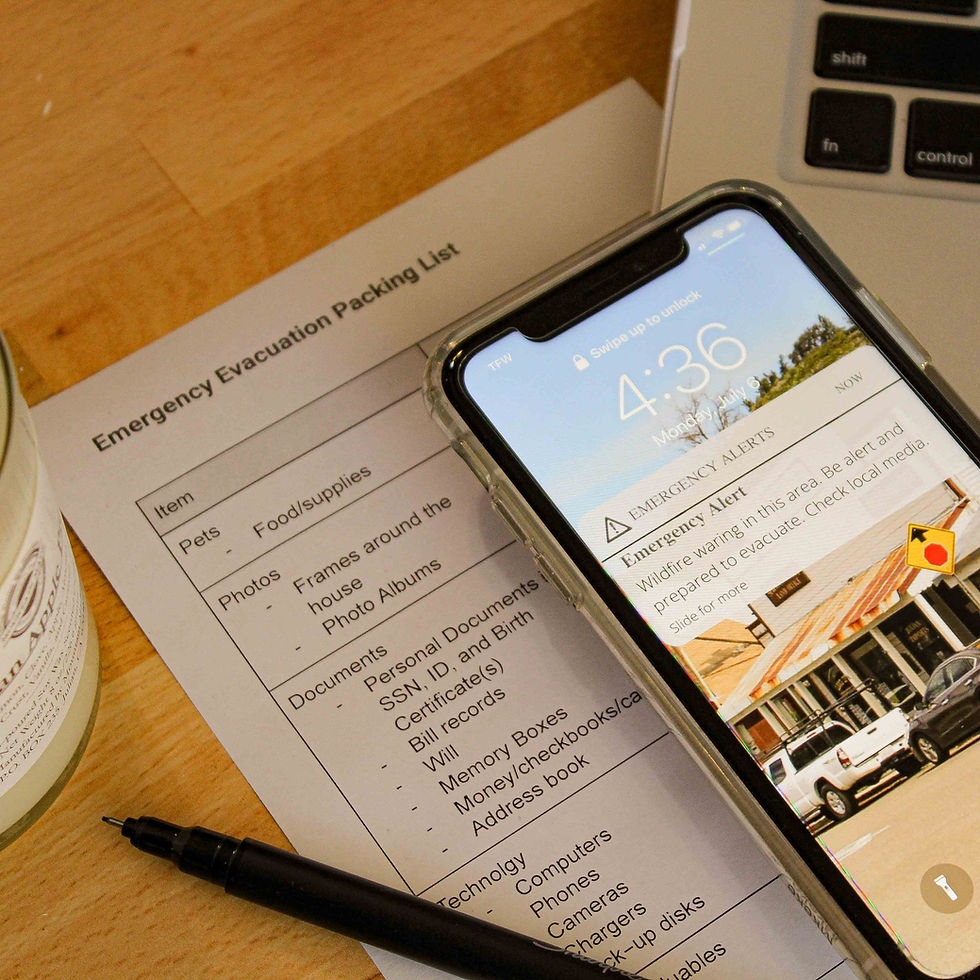
When there is an emergency like wildfire, all of a sudden, you have minutes to pack possessions and get to safety. Having gone through eight evacuations, I have learned that packing and preparing to evacuate our home is always a hectic time, no matter if we have five minutes or a day's notice. I'm stressed, scared, and multitasking; the future is unknown, and I always get a sinking feeling. With each new evacuation, my family gets more efficient at packing. I have never gotten used to the feeling of helplessness, though, when I realize that I forgot to pack an irreplaceable item and can't do anything about it.
One of the best ways I have found to make evacuations go smoother is making an emergency evacuation packing list. This eliminates a lot of the pressure to remember everything that needs to be packed. All my family members know what needs to be packed and where it is because of the emergency packing list. If no one is home during an emergency, the list will be incredibly helpful to a good samaritan or firefighters who come by.
During emergency situations, time is never granted, so start preparing as early as possible. It's best if you grab items in order of importance to you, starting with irreplaceable items and things you will need during and after the evacuation (in the event that you lose everything else). See the example list below.
CREATING THE LIST
There no right or wrong way to create an evacuation packing list. I like to create a document with a two-columned table as shown in the picture above. The first column has the item to pack and the second column has where the item is located in the house. After selecting an easy to read font, I then wrote out all the items we want to evacuate with in order of importance. Don't forget about the needs of those who live with you like babies, older relatives, and pets.
MY FIRST-HAND BONUS TIPS
Once the list is complete, it should be place somewhere that can easily be seen by members that live in the residents and someone who comes by to lend you a hand. Common places are on the fridge, next to the main entrance, or by the telephone (if you still have a landline).
Before you leave for a long trip, I highly recommend placing your most important items by the door with your packing list. This makes it easier if someone is able to help you out in an emergency. Another little tip I learned over the years is to store as much of your personal items in easy to grab clear plastic bins. For items on display in your home, keep extra bins to make packing quicker.
IN CONCLUSION
Discussing emergencies is never an easy topic. After living through eight wildfires, I have come to the concussion that I will never be comfortable with this topic. The more I have experienced emergencies and the more I prepare has helped ease some of the anxiety aground the topic.
List Example:
Top Priority
Can’t-live-without Items
Medications
Glasses
Baby items
Food
Photos Documents
Personal documents, i.e. SSN, ID, and birth certificate(s)
Bill records
Will
Memory boxes
Money/checkbooks/cards
Address book
Technology
Computers
Phones
Cameras
Chargers
Backup disks
Heirlooms/Valuables
Jewelry
Art/decor
Second Priority
A few days’ worths of clothes for each family member
Shirts
Pants
Socks/underwear
Shoes
Personal care items Food and water Tools
Flashlights
Battery-powered radio
First aid kit
Dust mask
Bedding
Sleeping bags/blankets
Pillows

Comments